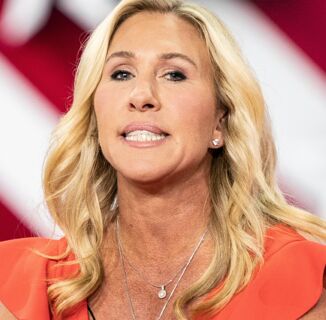In 2018, LGBTQ visibility and representation continues to grow throughout traditional media spaces, with major corporations taking note of their growing buying power. Although more efforts are being taken to show more inclusivity in messaging, it is still lacking in many areas, as society struggles with moving the needle on its views, acceptance, and acknowledgement of LGBTQ people. With social media being the driving force of culture it is more important than ever to ensure that the acronym doesn’t become tokenized for its value, and actual investment is made on a macro and micro level to represent and protect the LGBTQ community.
According to Forbes, LGBTQ inclusive ads can increase sales by up to 40%, with recommendations to purchase being as high as 66%. An additional study published previously on this website estimated the buying power of the LGBTQ community to be near $5trillion dollars globally, with nearly $1 trillion of that coming from the US. Despite this buying power, companies are still moving very slowly to become more inclusive with their advertising surrounding LGBTQ people.
Our INTO report goes on to note: “While major brands have shown much progress in demonstrating inclusivity in their marketing and advertising efforts, the survey found that there is still room for improvement. 53% of marketers said they only allocate between 0 and 4% on LGBTQ consumers annually; 3% said they allocate 20% or more annually; 15% allocate between 10 and 19% of their budgets; And 29% between 5 and 9%.”
The report also states that “According to the survey, only 18 percent of brand respondents are currently working on an LGBTQ-focused campaign, and 32 percent said they don’t include LGBTQ in their media planning and do not plan to do so. Nearly four in 10 (38%) of brands surveyed said they do not include LGBTQ-focused advertising in media planning because other demographics are a higher priority.”
The hope has always been that with visibility and representation, comes changes in the treatment of those people in society. So it is important that we do see more of ourselves represented in the brands we buy, and spaces we take up.
However, history has also taught us that macro level support doesn’t’ always correlate to changes needed to support the actual LGBTQ community, specifically that of black and brown people. In June of 2016, one of the largest mass shootings in the history of the United States took place at Pulse nightclub in Orlando, Fla. The shooting left over 50 people dead, mainly from black and brown communities and served as a reminder that even our “safe spaces” weren’t safe enough. Although support came in droves, I was shocked by the silence of many corporations who have been applauded for their support of the community, yet silent in one of the deadliest events to ever occur to us.
In 2017, LOGO released its list of the top 25 Trailblazing companies for LGBTQ support. The list was based on categories including inclusive advertising, policy support, donations, and support of Pulse. Of those 25 companies, 10 said nothing publicly about the tragedy that occurred at the Pulse Night club, including major companies like PNC Bank, Toyota, and Anheuser Busch, which are known for having several LGBTQ specific campaigns. Several other large companies such as Google, Macy’s, and Hallmark made less than three social media posts about the event, with no funds donated towards the efforts and movement for LGBTQ lives that arose from the situation.
Of these same 25 corporations, five have done nothing to support policies that look to help LGBTQ people. Only half of the list has publicly endorsed the Federal Equality Act, which include protections that ban discrimination on the basis of sexual orientation, gender identity, and sex in the areas of employment, housing, and public accommodations.
LGBTQ is more than a buzzword to add in a speech about diversity and inclusion. The acronym itself represents multiple communities within a marginalized group that each deal with oppression, shared and different. Our community deals with higher rates of homelessness, suicide, HIV, drug addiction, violence, and an inability to intersect into the socio-economic structure of society, part and parcel because these “allies” do nothing to support the real work needed to address these issues.
The CEO of Intel, who made the LOGO list at 23, also supported Donald Trump in joining his advisory councilwho is attempting to set LGBTQ rights back 50 years. It is these scenarios that continue to remind our community, that allyship is simply about the dollar, and we can no longer continue to suffer in silence.
It is not enough anymore to put our faces on the TV screens and giving us a seat at the table with disregard for equity stake needed to survive in community. Real changes are needed in the areas of investment in community, and policy changes that will ensure us the safety to exist as we are, while providing the opportunity for us to thrive in society.
We refuse to die on the hill of “look how far you all have come.” We are real people, and our survival matters.
Photo by Shay Horse/NurPhoto via Getty Images
Don't forget to share:
Help make sure LGBTQ+ stories are being told...
We can't rely on mainstream media to tell our stories. That's why we don't lock our articles behind a paywall. Will you support our mission with a contribution today?
Cancel anytime · Proudly LGBTQ+ owned and operated
Read More in Impact
The Latest on INTO
Subscribe to get a twice-weekly dose of queer news, updates, and insights from the INTO team.
in Your Inbox












